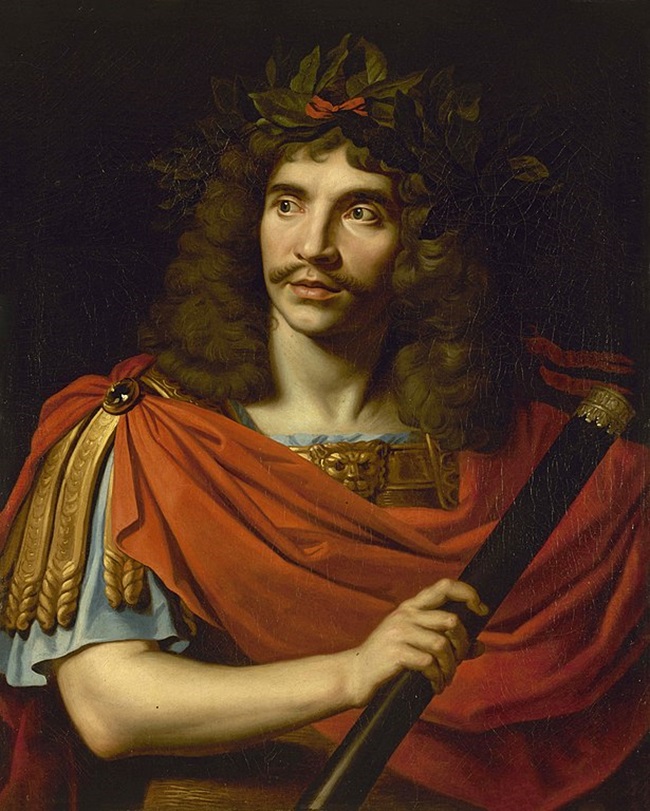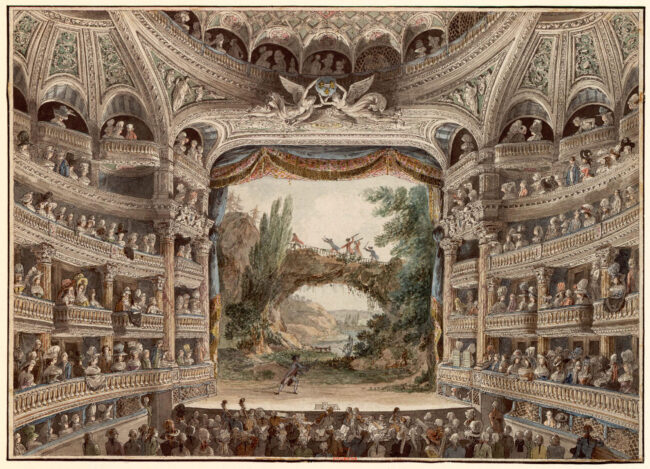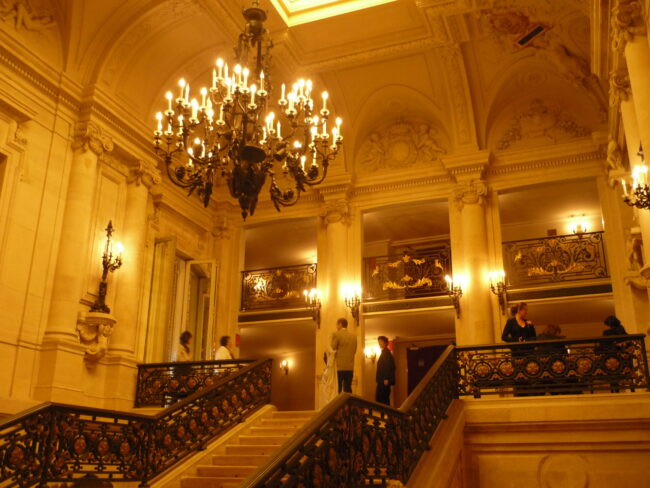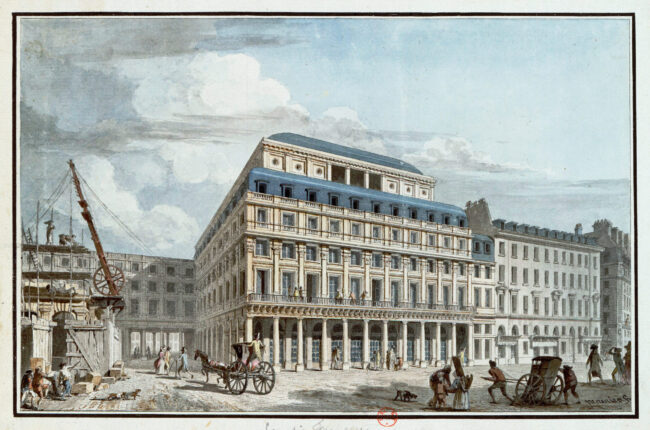Behind the Scenes at the Comedie Française


- SUBSCRIBE
- ALREADY SUBSCRIBED?
BECOME A BONJOUR PARIS MEMBER
Gain full access to our collection of over 5,000 articles and bring the City of Light into your life. Just 80 USD per year.
Find out why you should become a member here.
Sign in
Fill in your credentials below.
Next door to the Palais Royal, the Comédie Française has recently started to offer guided tours in English as well as French. They reveal a fascinating glimpse backstage into the life of the internationally renowned theater- the jewel in France’s theatrical crown.
The Comédie Française holds the distinction of being the oldest continuously run theater in Europe. It came into being in 1680, seven years after the death of France’s best-known playwright Molière. As was the custom in his day, Molière was a theater manager as well as playwright and ran his own theatre company, the Théâtre du Palais Royal. After his death in 1673 this company merged with another, the Théâtre du Marais to form the Théâtre Guénégaud on the Left Bank. Then, in 1680, on the order of King Louis XIV, this merged with the third company working in Paris, the Théâtre de Bourgogne, to form the Comédie du Roi. The name has nothing to do with humorous plays: comédie in French simply denotes stage drama and stage actors are known as comédiens or comédiennes (film performers are merely acteurs and actrices). It was given the responsibility of upholding the best in French dramatic tradition both in writing and performance.

Molière (1622-1673) in the role of Caesar in “The Death of Pompey,” portrait by Nicolas Mignard. 1658. Public domain.
Consequently it became the home of classical French drama: Molière for comedy, Racine and Corneille for tragedy. It moved around a lot, eventually finding a permanent home in 1782 in the newly-built Théâtre de l’Odéon. The Odéon itself has had a chequered career, especially its numerous attachments and withdrawals from the Comédie Française during the 20th century; it was occupied by students during the May 1968 uprising.
The Comédie Française finally moved into its grand, arcaded building on the corner of Rue de Richelieu and the much later Place Colette in 1799, adjacent to the part of the Palais Royal which is now the Conseil Constitutionnel. Occasionally from certain rooms in the latter you can hear rehearsals taking place.

Comédie-Française. View of the auditorium and stage in 1790 (as designed by Victor Louis). Public domain
The peculiarity, even uniqueness, of the Comédie Française lies in its ownership and management structure. In Molière’s day it was common for the actors of a theater company to be joint owners as well. Each would buy a number of shares and therefore would have a vote and a say in how the company was run. In 1681 the new Comédie du Roi did something similar, except that it was the king who selected 27 of the most gifted (in his opinion) members of the company to come together in an association which entitled them to share the profits from ticket sales and gave them a monopoly on playing in Paris and its suburbs.
A year later Louis gave them a pension of 12,000 livres which ensured their livelihood. At this time all theater companies relied on royal or aristocratic patronage in order to survive but a patron will always call the shots and the Comédie du Roi chafed under the capricious whims of the king and his Gentlemen of the Chamber. Its favored status also caused resentment and jealousy among other theater companies and it was partly to deflect attention from its royal patronage that the new company started to call itself the Comédie Française, the name which stuck.

Grand staircase at the Salle Richelieu, Comédie-Française. Photo credit: Rémih / Wikimedia commons
The 12,000 livres was shared out between the 27 members of the association as an annual pension, and this membership structure still exists today, with modifications. The members are known as sociétaires and effectively are responsible for the company. The day-to-day management is delegated to a paid general administrator but the sociétaires are ultimately responsible, from deciding which performers should join, to the programming, publicity and overseeing the finances. The bulk of the company’s income, and therefore that of the sociétaires, comes from ticket sales. Although the Ministry of Culture supervises the theater, the State’s financial commitment is only to maintain the building in Place Colette.

The Salle Richelieu, Comédie Française, at the end of the 18th century. Gallica/ BNF. Public domain.
When a performer is invited to join the Comédie Française they become a pensionnaire. It’s not just actors who join: dancers, musicians, singers and circus performers all belong to the company according to their skills. Their contract is open-ended but it starts with a two-year probation period and the company reserves the right to end the contract each year. On top of that the performer is expected to work exclusively for the Comédie Française for as long as they are employed: leave of absence to work on other projects is given but it is the exception rather than the rule.
So, to be selected is both an honor and a commitment to the company that may or may not result in a long-term relationship. After the first year a pensionnaire becomes eligible to become a sociétaire, although the number of places is fixed so they can’t take up the post until someone else leaves – or dies. Few are well-known outside France and while many have dabbled in TV and film (a tradition going back to 1908 and the very early days of cinema), it is noticeable that most members are stage performers first and foremost.
The most recent addition to the roster of pensionnaires is Thierry Godard – who did gain international fame as the antihero cop in crime drama Spiral. Despite the uncertainty of employment, being a member of the Comédie Française is a badge of honor and the prestige undoubtedly makes up for any shortcomings in the terms of employment. You will often see on film and TV posters the words “de la Comédie Française” in small letters after someone’s name – which also lends an aura of quality to the film or series.
The sociétaires’ responsibility includes deciding which plays should enter the Répertoire, via a reading committee. Until quite recently the Répertoire was very traditional: for a long time it consisted almost exclusively of French plays apart from a few Shakespeare pieces and the Ancient Greeks. Although, to be fair, the repertoire included contemporary plays from an early date, featuring Voltaire and Beaumarchais in the 18th century and Romantic writers such as Alfred de Mussy, Alexandre Dumas and Victor Hugo in the 19th, alongside the “classics” of Molière, Racine and Corneille.
However, non-French playwrights such as Ibsen and Pirandello didn’t start to feature until after the First World War and it was only towards the end of the 20th century that Black writers entered the Répertoire. It finally admitted its first American playwright as recently as 2011 (Tennessee Williams’ A Streetcar Named Desire), and its first play in Arabic in 2013.
As with all major theater, the Comédie Française has had to adapt to changing times. It has built a studio theater for small-scale, more experimental productions, and since 2009 has accepted six star students a year from the Grandes Écoles du Théâtre to work professionally for a season. In 2016 it started live broadcasts of its performances, a phenomenon that has taken off around the world and allows audiences to experience the best in theater even when they cannot attend in person. The company also tours abroad – as the most prestigious French theater and supervised by the French government, it has an important role to play in disseminating the best in French culture.
Not surprisingly for a 300-year old company, the Comédie Française has gone through many vicissitudes in its history: revolutions, wars, social changes. It has faced financial crises, multiple sackings and resignations, and internal division. But it is still standing, both literally and metaphorically, and as we enter the second quarter of the 21st century, the future of France’s flagship theater company looks assured.
DETAILS
Comédie Française
1 Place Colette, 1st arrondissement
Guided visits in English on Saturday mornings at 10:30 am
Priced between 8€-15€
Lead photo credit : La facade de la Comedie-Francaise, seen from the Avenue de l'Opéra, 2007. Photo Credit: Dottore Gianni


